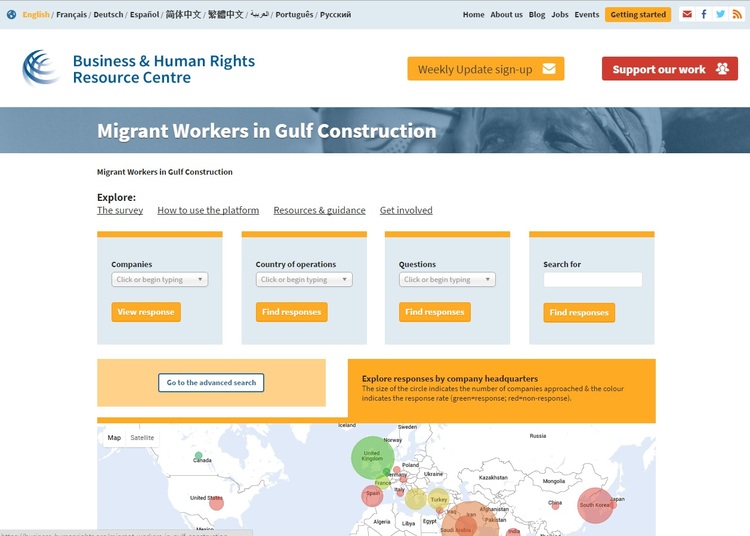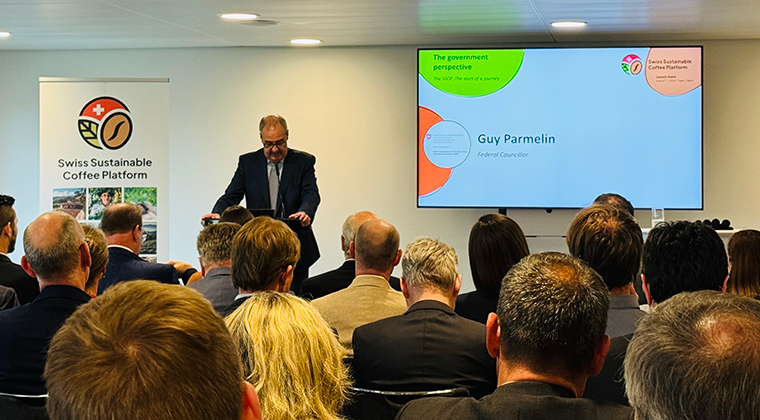New survey sheds light on construction practices in the Gulf

June 22, 2016
This month, the Business and Human Rights Resource Centre launched a new interactive platform that tracks and compares engineering and construction (E&C) companies’ policies on migrant worker rights in the Gulf region. The platform is survey-based, relying on self-reporting by large firms operating in the United Arab Emirates (UAE) and Qatar.
Looking at the results, here are three takeaways about the state of migrant workers’ rights in the Gulf construction industry:
1. Construction firms in the Gulf are nervous about human rights.
The Resource Centre received 10 complete replies from the 47 companies they surveyed, a response rate of 21 percent. By comparison, when the Resource Centre sent a similar survey to 28 companies in the garment sector, it received 26 replies. And its overall response rate to allegations against specific companies is 75 percent. The low response rate from E&C firms reflects the nascent state of human rights initiatives in the industry. While other business sectors have nearly two decades of experience with corporate social responsibility and human rights, the construction industry in the Gulf is at the very beginning stages of even reporting on steps it takes to identify and mitigate human rights risks.
2. Large construction firms may exert more direct control in employment than they’ve previously acknowledged.
In the past, E&C firms have pointed out that worker rights abuses often result from actions by second, third, and fourth-tier suppliers which employ many workers. But of the approximately 55,573 workers employed by the nine firms that provided employee data, 62 percent were directly employed by those companies. Only 38 percent* were indirectly employed through subcontractors or labor supply (“manpower”) firms. While this high level of direct employment is more than expected, it makes sense: for long-term projects it is often less expensive to directly employ workers than to rent their labor through “manpower” companies or subcontractors.
3. Construction companies expect their suppliers to adhere to standards, but don’t carry out enforcement actions to ensure that they do.
All survey respondents indicated that they expect their subcontractors to adhere to relevant national laws and/or codes of conduct or standards. At the same time, none provided specific information on the number of audits they conduct to ensure compliance or the penalties imposed for noncompliance with standards that would protect migrant workers.
The ten companies that responded to the Resource Centre’s survey are helping increase transparency about human rights in this highly opaque sector. There’s a long way to go to ensure that construction workers are treated fairly as they build World Cup stadiums, art museums, universities, and hotels in the Gulf. But more transparency is a start, especially as it reveals that large engineering and construction firms have the ability to make positive changes for better work in this important sector.
*One of the nine respondents provided an estimate of direct employees but did not provide a corresponding figure for indirectly hired workers. Assuming it does indirectly employ workers, the overall percentage of indirect hires would increase proportionally to this figure.
 Global Labor
Global Labor


